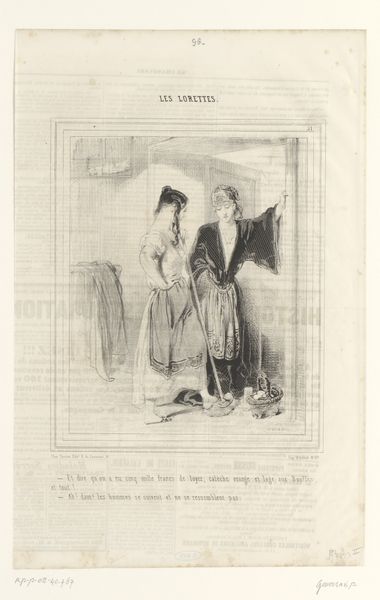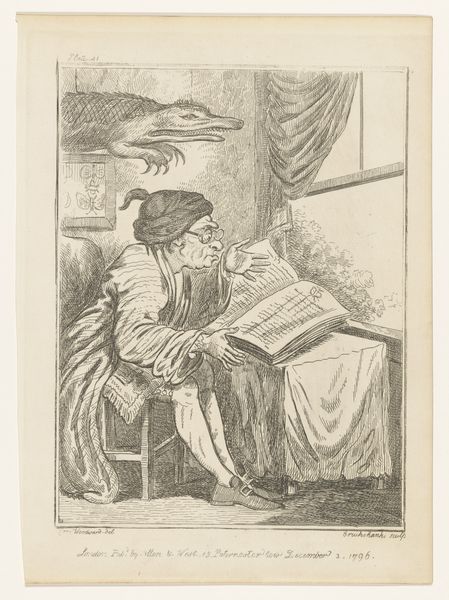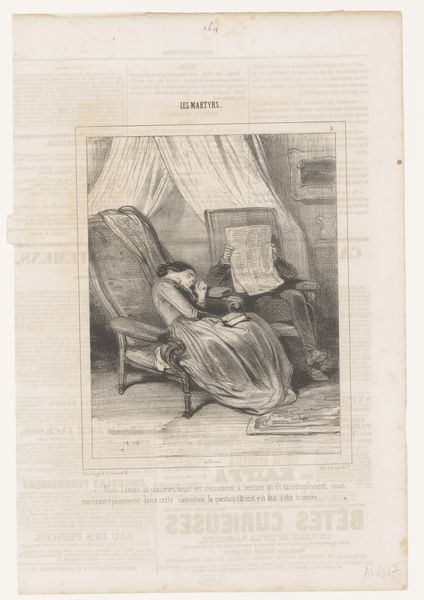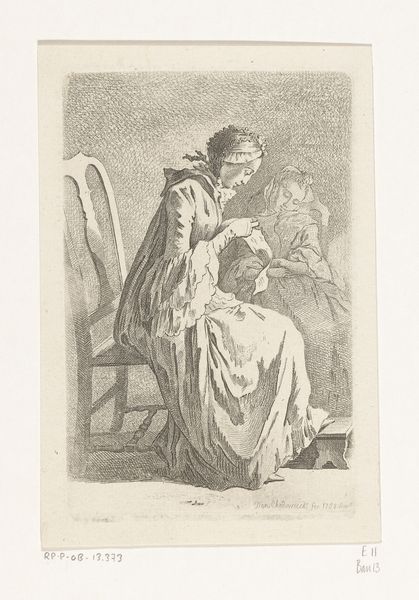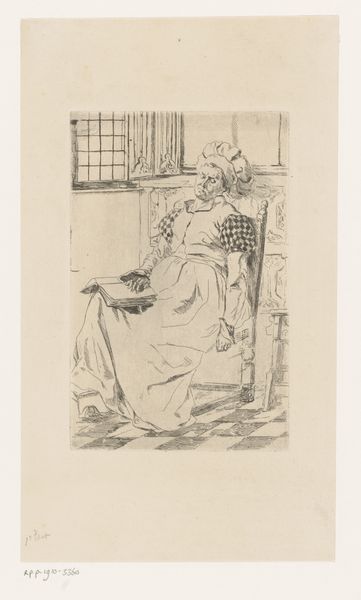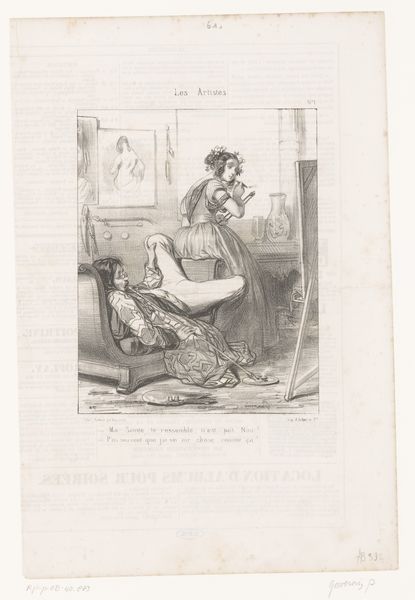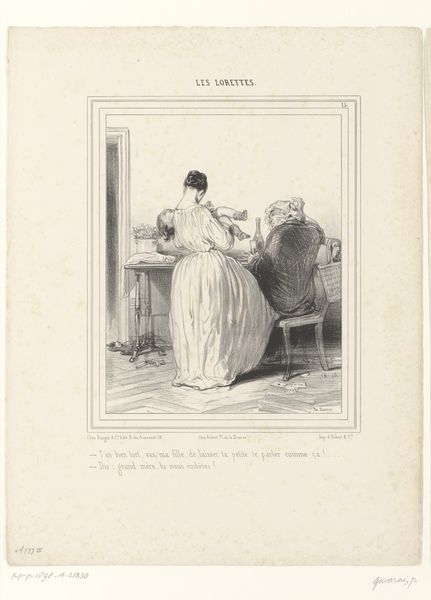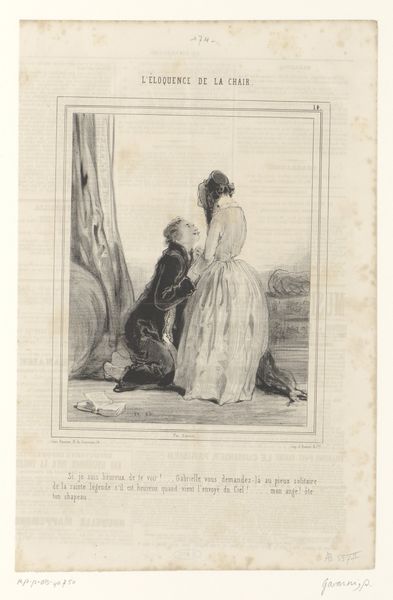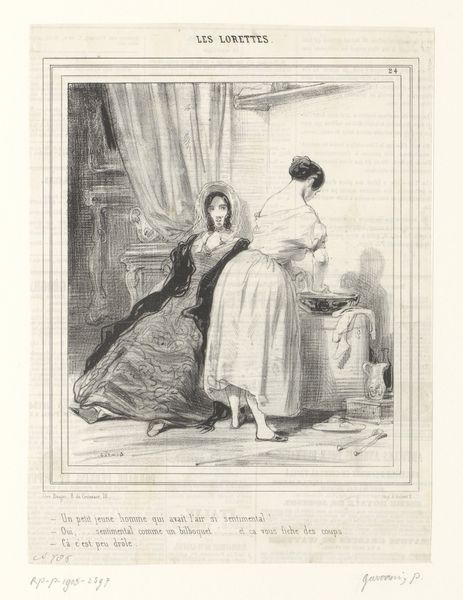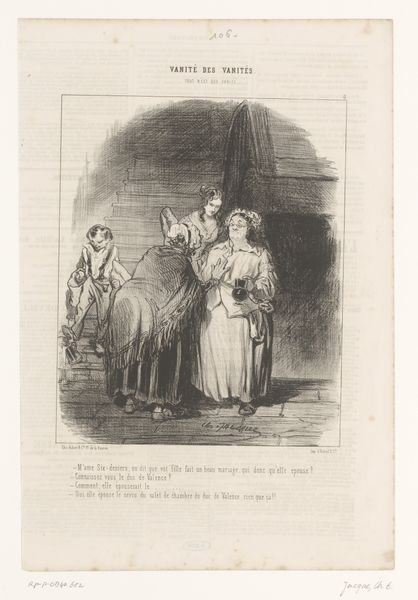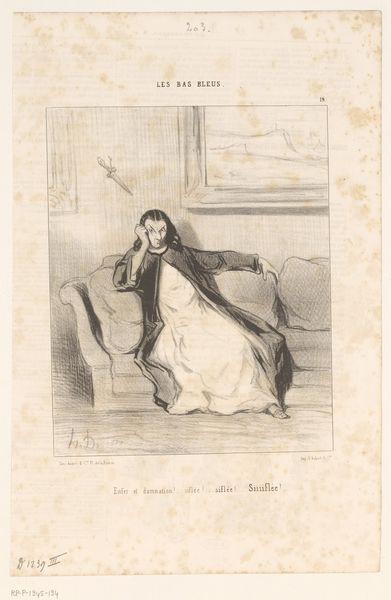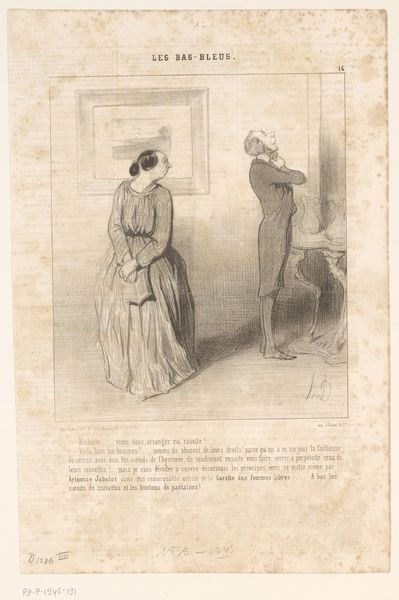
drawing, lithograph, print, pen
#
portrait
#
pencil drawn
#
drawing
#
aged paper
#
light pencil work
#
lithograph
# print
#
caricature
#
pencil sketch
#
old engraving style
#
personal sketchbook
#
intimism
#
romanticism
#
19th century
#
pen
#
pencil work
#
genre-painting
Dimensions: height 291 mm, width 212 mm
Copyright: Rijks Museum: Open Domain
Editor: This lithograph from 1838 by Paul Gavarni, titled "Student stapt uit zijn bed," depicts a disheveled student in his room. There's a sense of intimacy and also…discomfort in the sketch. What can you tell me about it? Curator: The roughness of the lithograph, the aged paper—it speaks to the very conditions of production. Gavarni, working in a rapidly industrializing 19th-century Paris, likely aimed for a broad audience through printmaking. Consider the social context. What anxieties about labor, or even about class mobility, might be present here, given the student's rather humble surroundings? Editor: Well, you can see a diagram on the wall—clearly this student values education, but it contrasts sharply with the messy, cramped room. The poverty seems emphasized. Curator: Exactly. Gavarni used a relatively cheap, reproducible medium to depict the struggles of everyday life. This wasn't high art for an elite patron. The "high" subject matter in contrast with the cheap materiality complicates it. This allows us to reconsider the role of "art" in documenting, even subtly critiquing, socioeconomic realities. Was this intended as satire, do you think? Editor: It feels a bit mocking, but maybe also sympathetic. He isn't glorified; instead, he is shown waking in humble circumstances. Curator: Consider too that printmaking in this period wasn’t just about replicating images; it was a form of labor in itself. Each print required skill and time. Gavarni is employing a process reflective of its era, its challenges, and new technologies. The subject is not just the student, but the means of representing this student, this situation. How might the lithographic process itself contribute to our understanding of 19th century anxieties about class and labour? Editor: I didn't consider the materiality until you framed it like that. It really does add a layer of meaning – thanks! Curator: Indeed. Seeing art as embedded within the economic realities and processes of its creation changes our perspective.
Comments
No comments
Be the first to comment and join the conversation on the ultimate creative platform.
